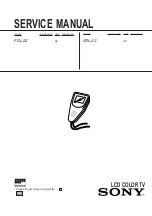
2. Safety rules
-
Where the power generator is used for supplying an
existing network, e.g. at home or workshop, check
the effectiveness of electric protection used in this
network. Additional protection may be necessary
due to the low short-circuit current of the power
generator. Connecting the unit to such a network
may be only performed by a qualified and licensed
electrician.
-
Electrical cables must be carefully selected,
adjusted and serviced. Good technical
condition of the insulation ensures the
safety of the user. Cables must be inspected
periodically and in case of damaging, they
must be replaced (not repaired).
-
Adjust the length and cross-section of the cable
according to the needs:
-
Depending on the cable length, there is a voltage and
current drop. We recommend the use of extension
cords with a core cross-section of 1.5mm2 or
more, and the total length not exceeding 60 m.
Observe the following rules:
-
Do not use the cables of unknown origin,
-
expand the cable completely to avoid kinks in cable
insulation,
-
use cables in accordance with the manufacturer's
instructions,
-
Power generators without AVR (Automatic Voltage
Regulation) are not designed to power sensitive
electronic equipment, e.g. TV, hi-fi equipment,
computers. These devices may not be compatible
with the power generator.
9
-
Do not overload the power generator. To ensure
proper operation and long life of the power
generator, observe the following rules:
-
total power of current receivers must not exceed
the power stated on the nameplate.
-
some current receivers (in particular electric
motors, compressors, etc.), during their start-up,
draw power greater than their rated power. For
more
detailed
information,
contact
an
authorized dealer of FOGO Sp. z o.o.
-
do not exceed the maximum power of connecting
sockets of the power generator.
-
Do not apply the nominal power to the
power generator in conditions different
than the nominal conditions. Rated power
is
specified
for
specific
operational
conditions - (atmospheric pressure of 1
bar, air temp. of 20°C, air humidity of 60%).
Power drop caused by the air temperature
or pressure drop (due to the location
altitude) may in adverse conditions exceed
10%.
-
Information on the construction of the power
generator - electrical connection. Generator
windings are not connected to the ground. As a
result, the device is safe and eliminates the risk
of electric shock. When the power generator is
used to supply power to receiving networks in
TN or TT system, it is necessary to connect the
neutral point of the generator winding to a PE
terminal and to ground
the device in accordance with PN-EN 60364-4-41
standard, as well as to provide additional shock
protection - RCD with tripping current not
exceeding 30 mA. The installation of this
equipment must be carried out by a qualified
electrician. The RCD acts as a protection against
insulation damage. It cuts off the power after
detecting insulation failure (leakage) between the
voltage line and any part of the grounding (casing)
on the output side of the RCD.
-
3-phase power generators (230/400V), single-
phase outputs (230V) are connected in parallel
with the winding in order to withstand the full
load. Power of single-phase output (230V)
indicated on the nameplate and in the technical
data is only available for these outputs under the
condition that other three-phase receivers are
not connected to the socket. Caution!!! Never
connect the three-phase sockets of the
generator to a single-phase distribution box.
When using both: single-phase 230V current and
three-phase 400V current, the current value per
phase must not exceed the value indicated on
the nameplate of the power generator.
-
Thermal or magneto-thermal circuit breaker. Power
generators are equipped with a thermal circuit
breaker, which acts as overload protection. If the
power supply is interrupted during operation, it
may be caused by automatic activation of the
thermal overload switch.
Summary of Contents for FH 9000
Page 31: ......











































